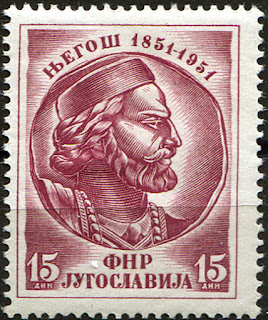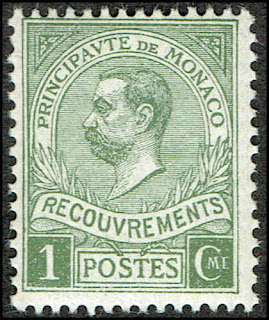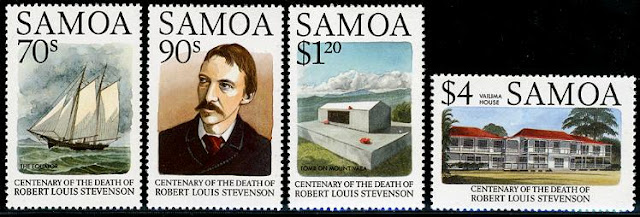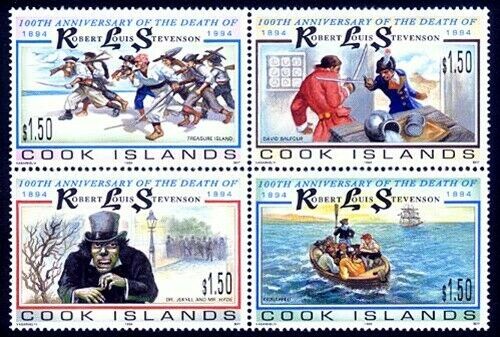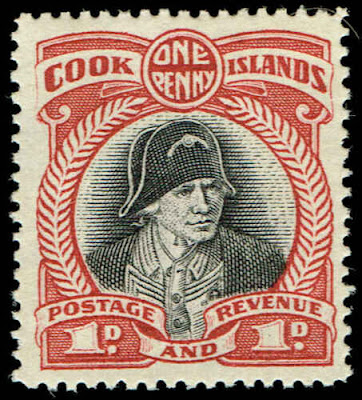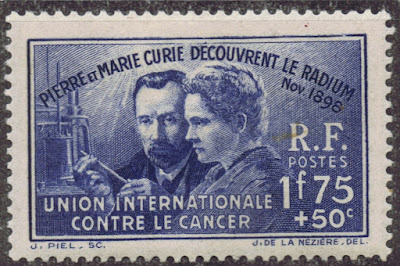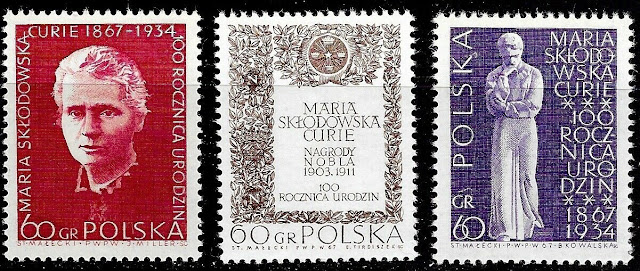1813 Born: Petar II Petrović-Njegoš, Montenegrin metropolitan, philosopher, and poet (d. 1851)
Petar II Petrović-Njegoš (Serbian Cyrillic: Петар II Петровић-Његош; 13 November 1813 – 31 October 1851), commonly referred to simply as Njegoš (Његош), was a Prince-Bishop (vladika) of Montenegro, poet and philosopher whose works are widely considered some of the most important in Serbian and Montenegrin literature.
Venerated as a poet and philosopher, Njegoš is well known for his epic poem Gorski vijenac (The Mountain Wreath), which is considered a masterpiece of Serbian, Montenegrin and South Slavic literature, and the national epic of Serbia, Montenegro and Yugoslavia. Njegoš has remained influential in Montenegro and Serbia, as well in neighbouring countries, and his works have influenced a number of disparate groups, including Serbian, Montenegrin and South Slav nationalists, as well as monarchists and communists.
Stamps from Yugoslavia and Serbia depicting Petar II Petrović-Njegoš
1848 Born: Albert I, Prince of Monaco (d. 1922)
Albert I (13 November 1848 – 26 June 1922) was Prince of Monaco and Duke of Valentinois from 10 September 1889 until his death. He devoted much of his life to oceanography. Alongside his expeditions, Albert I made reforms on political, economic and social levels, bestowing a constitution on the Principality in 1911.
Prince Albert I of Monaco devoted much of his life to the study of the sea and oceans. At 22 years old, he embarked on a career in the then relatively new science of oceanography. Understanding the importance of the relationship between living creatures and their environment, he devised a number of techniques and instruments for measurement and exploration. Albert I was also the “instigator and promulgator” of the oceanographic science he contributed to create. He founded the Oceanographic Institute Foundation Albert I, Prince of Monaco is a private foundation recognized of public utility, established in 1906. It has two buildings: The Oceanographic Institute of Paris, now renamed Ocean House, and what became the world-renowned Oceanographic Museum of Monaco. This includes an aquarium, a museum, and a library, with research facilities in Paris.
He owned four, increasingly impressive research yachts, Hirondelle, Princesse Alice, Princesse Alice II and Hirondelle II. Accompanied by some of the world's leading marine scientists, he travelled the length and breadth of the Mediterranean, making numerous oceanographic studies, maps and charts. In 1896, on an oceanographic survey of the Azores, he discovered the Princess Alice Bank.
Stamps from Monaco depicting Albert I
1850 Born: Robert Louis Stevenson, Scottish novelist, poet, and essayist (d. 1894)
Robert Louis Stevenson (13 November 1850 – 3 December 1894) was a Scottish novelist and travel writer, most noted for Treasure Island, Kidnapped, Strange Case of Dr Jekyll and Mr Hyde, and A Child's Garden of Verses.
Born and educated in Edinburgh, Stevenson suffered from serious bronchial trouble for much of his life, but continued to write prolifically and travel widely in defiance of his poor health. As a young man, he mixed in London literary circles, receiving encouragement from Andrew Lang, Edmund Gosse, Leslie Stephen and W. E. Henley, the last of whom may have provided the model for Long John Silver in Treasure Island. Stevenson spent several years in search of a location suited to his health, before finally settling in Samoa, where he died.
A celebrity in his lifetime, Stevenson's critical reputation has fluctuated since his death, though today his works are held in general acclaim. He is currently ranked as the 26th most translated author in the world.
His 2 most famous novels
Treasure Island (1883) His first major success, a tale of piracy, buried treasure, and adventure, has been filmed frequently. In an 1881 letter to W. E. Henley, he provided the earliest known title, "The Sea Cook, or Treasure Island: a Story for Boys".
Strange Case of Dr Jekyll and Mr Hyde (1886), a novella about a dual personality much depicted in plays and films, also influential in the growth of understanding of the subconscious mind through its treatment of a kind and intelligent physician who turns into a psychopathic monster after imbibing a drug intended to separate good from evil in a personality.
Stamps from Samoa, Western Samoa and the Cook Islands depicting Robert Louis Stevenson or his works
1989 Died: Franz Joseph II, Prince of Liechtenstein (b. 1906)
Franz Joseph II (Franz Josef Maria Aloys Alfred Karl Johannes Heinrich Michael Georg Ignaz Benediktus Gerhardus Majella; 16 August 1906 – 13 November 1989) was the reigning Prince of Liechtenstein from 1938 until his death.
Franz Joseph was the son of Prince Aloys of Liechtenstein and Archduchess Elisabeth Amalie of Austria. He succeeded his childless grand-uncle, Prince Franz I, after his father renounced his right of succession in his favour in 1923.
During his reign women received voting rights for the first time, following a referendum on the topic (among men only) in 1984.
Franz Joseph was an extremely popular sovereign in Liechtenstein. He was the first ruling prince to live full-time in the principality. He also oversaw the economic development of Liechtenstein from a poor agricultural backwater into one of the richest countries (per capita) in the world.
